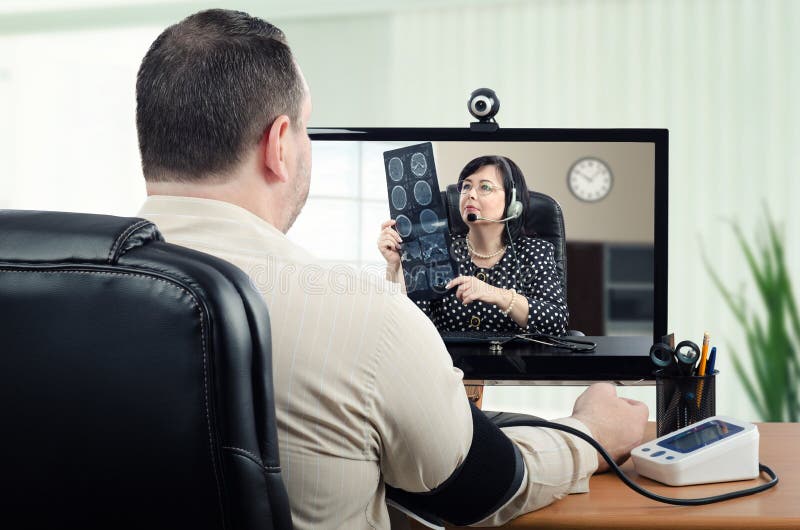Benefits of Using Teledoctors for Remote Medical Consultations
Teledoctors: Bridging the Space Between People and Medical Care Carriers
The development of teledoctors represents a significant change in the healthcare landscape, using services to long-standing availability issues encountered by people and suppliers alike. By incorporating telemedicine into standard methods, medical care systems can reach underserved and remote populations, providing critical medical consultations without the obstacles of distance and travel. This standard shift not only improves person involvement yet likewise maximizes source allocation for service providers. Nevertheless, the widespread adoption of teledoctors increases crucial inquiries concerning the sustainability of such techniques and the ramifications for future health care distribution. What obstacles lie ahead in ensuring this version's effectiveness and equity?
Increase of Telemedicine

The surge of telemedicine is additionally sustained by the need for cost-effective medical care. Health care systems internationally are under stress to minimize costs while maintaining high quality treatment, and telemedicine supplies a feasible option. By reducing the requirement for physical sees, telemedicine decreases above expenses for health care centers and eventually decreases the economic concern on clients.
In Addition, the COVID-19 pandemic served as a catalyst, speeding up the adoption of telemedicine practices. Social distancing measures and the need to decrease direct exposure threat necessitated a change towards remote assessments, triggering regulative bodies to adapt and sustain telehealth services. This shift has not just proven telemedicine's efficacy however also its prospective to evolve as a staple part of modern healthcare systems.
Advantages for People
As telemedicine remains to reshape health care distribution, individuals stand to get significantly from this transformation. Mostly, telemedicine boosts access, enabling people in underserved or remote areas to get in touch with doctor without the need for comprehensive traveling. This is particularly advantageous for people with movement issues or those residing in country regions where health care facilities may be scarce. Telemedicine additionally offers individuals the comfort of obtaining clinical recommendations and treatment from the comfort of their homes, lowering the moment and expense connected with traveling to a medical care center.
In addition, telemedicine supports connection of care by assisting in regular follow-ups and tracking, which are crucial for handling chronic problems. Individuals can conveniently arrange appointments and access medical care solutions outside standard office hours, fitting their hectic way of livings. This versatility leads to enhanced individual interaction and adherence to therapy plans, potentially causing far better health results.
Furthermore, telemedicine can help alleviate the danger of infection transmission, a worry enhanced by the COVID-19 pandemic. By lessening the need for in-person check outs, people can stay clear of crowded waiting areas and lower exposure to contagious ailments. Ultimately, telemedicine encourages patients by providing prompt, effective, and individualized health care services.
Advantages for Providers
For doctor, telemedicine supplies significant advantages that enhance the performance and reach of their practice. By leveraging digital innovation, carriers can prolong their solutions to a more comprehensive demographic, including those in remote or underserved areas. This not only eases geographical barriers yet additionally optimizes individual retention and purchase by making health care more accessible.
Another key advantage is the decrease in overhead prices. With telemedicine, the demand for physical area reduces, permitting carriers to reduce property and operational expenses. Furthermore, telemedicine assists in far better time monitoring by decreasing the requirement for commuting and enabling for more versatile scheduling. This versatility can result in boosted person assessments per day, thus boosting income potential.
Telemedicine additionally cultivates a much more joint atmosphere for doctor. teledoctors. It enables smooth sharing of patient info among experts, boosting analysis precision and treatment results. In addition, electronic platforms can incorporate with digital wellness documents (EHRs), improving information accuracy and streamlining administrative tasks
Additionally, telemedicine boosts patient complete satisfaction, which is important for company track record and success. By offering prompt and practical treatment, service providers can improve individual loyalty and interaction, additionally strengthening the provider-patient relationship.
Conquering Challenges
While telemedicine uses various click reference benefits for healthcare service providers, it additionally presents obstacles that need cautious consideration. One considerable difficulty is guaranteeing information personal privacy and safety and security. As person information is transferred digitally, the danger of information violations increases, necessitating durable cybersecurity actions. Health care carriers need to stick to stringent laws like HIPAA to safeguard delicate details, therefore needing investment in safe and secure systems and recurring team training.
An additional difficulty is the electronic divide, which can hinder accessibility to telemedicine solutions. Not all patients have equivalent access to the essential technology or web connectivity, especially those in country or underserved areas. This disparity can worsen existing health care inequalities, making it important for companies to check out alternate options, such as partnerships with area companies, to connect this void.
Additionally, there are constraints in conducting physical exams remotely. Particular problems require in-person assessment, highlighting the requirement for a crossbreed version that incorporates telemedicine with standard gos to. When telemedicine is proper and making certain seamless changes in between in-person and virtual treatment., service providers need to navigate these obstacles by developing protocols to identify.
Future of Healthcare
The future of healthcare is positioned for a transformative development, driven by the fast assimilation of technology and advancement. Central to this change is the rise of telemedicine, which is redefining just how clinical services are accessed and supplied. With developments in data, telehealth systems are becoming more sophisticated, supplying real-time appointments, remote patient tracking, and customized treatment strategies. This not just enhances individual benefit but additionally broadens access to medical care, specifically in rural and underserved areas.
Expert system (AI) and artificial intelligence are also set to play essential duties. These innovations can examine substantial amounts of information, providing predictive understandings into patient wellness, enhancing diagnostic precision, and customizing treatment plans. AI-driven devices can increase doctor' capabilities, causing more informed decision-making and far better patient end results.
Additionally, wearable technology and Web of Medical Points (IoMT) tools are revolutionizing client engagement and positive health and wellness management. These gadgets allow continual health and wellness monitoring, permitting early discovery of timely treatments and possible issues.
As these modern technologies remain to advance, they guarantee to create a much more reliable, available, and patient-centric medical care system, eventually connecting the void between people and doctor. - teledoctors
Verdict
Teledoctors are changing healthcare by considerably improving availability and efficiency via remote consultations. This advancement sustains people in underserved locations by supplying timely clinical advice without requiring physical brows through, hence enhancing client involvement and continuity of treatment. Doctor take advantage of more efficient time administration and boosted collaboration opportunities. In spite of challenges such as regulatory concerns and technical barriers, the future of medical care shows up increasingly comprehensive and effective due to the assimilation of telemedicine right into traditional care designs.

As use this link telemedicine proceeds to improve healthcare distribution, individuals stand to obtain significantly from this improvement. Primarily, telemedicine improves helpful site access, enabling patients in underserved or remote areas to consult medical care carriers without the demand for considerable travel. Telemedicine also uses patients the benefit of getting clinical suggestions and treatment from the comfort of their homes, minimizing the time and expense connected with taking a trip to a health care facility.
Inevitably, telemedicine equips people by providing prompt, efficient, and customized health care solutions.